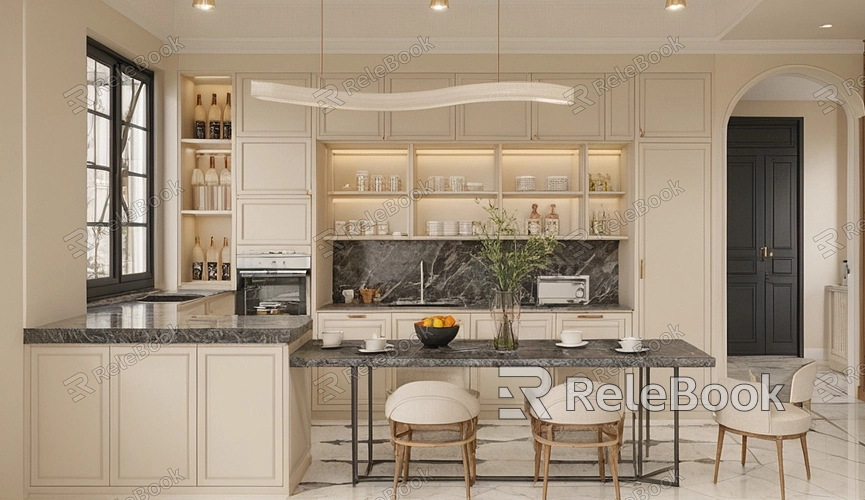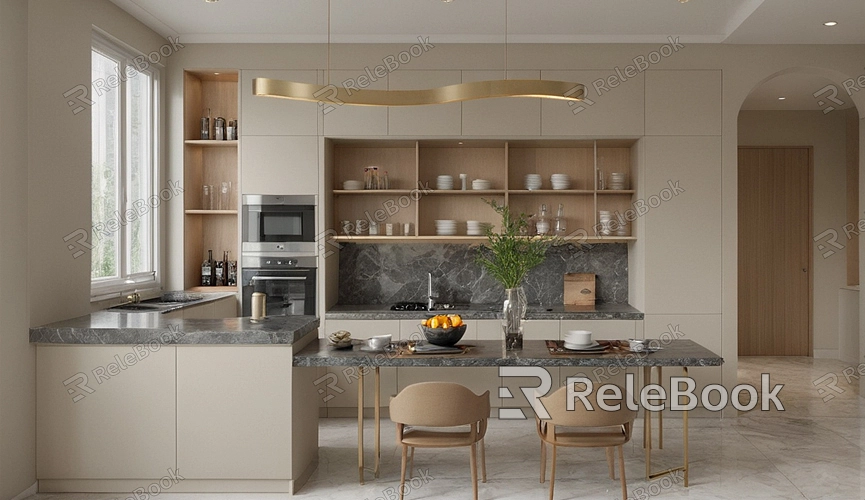Why Does My SketchUp Model Render Only One Texture?
SketchUp is a widely popular tool for architectural design, interior design, and various 3D modeling projects. Its ease of use and powerful features attract many designers and enthusiasts. However, users often encounter a frustrating issue while rendering their models in SketchUp: the model renders only one texture. This not only affects the aesthetic quality of the work but can also impact the overall design outcome. This article will delve into the potential reasons for this problem and how to resolve it, helping users achieve better rendering results in SketchUp.

Improper Texture Application
When using SketchUp, many users may inadvertently apply textures incorrectly. Texture mapping is the process of applying a two-dimensional texture image to the surface of a three-dimensional model. If the mapping is incorrect, the model may only display a single texture during rendering. To avoid this situation, users should pay attention to the following points when applying textures:
1. Choosing the Right Texture Type
SketchUp supports various types of textures, including planar and volumetric textures. Selecting the appropriate texture type based on the shape and design requirements of the model is crucial. For example, using planar textures on complex curved surfaces may result in distortion; thus, using volumetric textures for a more natural effect is recommended.
2. Adjusting Texture Coordinates
After applying texture, users need to check if the texture coordinates are correct. Incorrect texture coordinates can lead to texture repetition or stretching, adversely affecting the rendering quality. Users can manually adjust the position and orientation of the texture using the "Texture" menu's "Position" feature to ensure they align with the model's surface.

Incorrect Material Settings
In addition to texture application, the settings of materials are also critical factors influencing rendering outcomes. Materials not only determine the appearance of the model's surface but also affect properties like lighting and reflection. If the material settings are incorrect, the model may only display a single texture. Here are some common material setting issues and their solutions:
1. Checking Material Properties
In SketchUp, each material has specific properties, such as color, glossiness, and reflectivity. If these properties are set improperly, the rendering quality may suffer. Users can review and adjust the properties of each material using the "Materials" window to ensure they meet expectations.
2. Using Texture Replacement
In certain cases, users may encounter a situation where only one texture is displayed during rendering. This could be because only one texture has been applied to the material properties. Users can try adding multiple textures within the material or use the "Texture Replacement" feature to enhance the rendering results.
Improper Renderer Settings
Besides texture and material settings, the renderer's configurations may also lead to the model rendering only one texture. Different renderers handle textures and materials differently, requiring users to make adjustments based on the renderer in use.
1. Choosing the Right Renderer
SketchUp supports various renderers, such as V-Ray, Enscape, etc. Each renderer has unique functions and characteristics, so users need to select one suitable for their project. When selecting a renderer, it may be helpful to refer to online reviews and case studies for more informed choices.
2. Adjusting Renderer Settings
When using a specific renderer, users must adjust the settings according to the project's needs. For example, in V-Ray, settings for texture reflection, refraction, and other parameters can significantly affect the final rendering. Ensuring these settings are appropriate can effectively resolve the issue of rendering only one texture.
Model Geometry Issues
In SketchUp, the model's geometric structure is another crucial factor impacting rendering quality. If there are problems with the model's geometry, it may lead to abnormal texture displays, even rendering only one texture.
1. Checking Model Groups and Components
While building a model, users may combine multiple elements into a group or component. If these groups or components are incorrectly configured, it could result in only one texture being displayed during rendering. Users can check the settings of groups and components through the "Entity Info" window to ensure they are correctly merged and have reasonable geometric structures.
2. Optimizing Polygon Count
If the polygon count of a model is excessively high, the renderer might opt to display the simplest texture during rendering. Users can consider optimizing the polygon count to improve rendering efficiency and quality.
Texture File Issues
Sometimes, the problem may not lie with SketchUp itself but rather with the texture files being used. If a texture file is corrupted or in an unsupported format, it can lead to rendering issues.
1. Confirming Texture File Format
When using textures, users need to ensure that the texture file format is supported by SketchUp. Commonly supported formats include JPEG and PNG. If the texture file format is incorrect, users can try converting it using image editing software.
2. Checking Texture File Path
In SketchUp, the path to the texture file must be correct. If the texture file has been moved or deleted, SketchUp will be unable to load that texture, resulting in the default texture being displayed during rendering. Users can re-specify the path to the texture file in the "Materials" window.
Optimizing the Rendering Process
Finally, optimizing the rendering process is an effective way to prevent rendering only one texture. A well-structured rendering workflow can significantly improve rendering quality and efficiency.
1. Pre-render Testing
Before conducting large-scale rendering, users can perform small-scale pre-render tests to check the application of textures and materials. This not only helps users identify potential issues but also increases the likelihood of successful final rendering.
2. Utilizing Real-Time Rendering Features
Some advanced renderers offer real-time rendering capabilities, allowing users to view the effects as they adjust the model. This approach can help users promptly identify issues and make adjustments, thus avoiding problems with rendering only one texture.
By carefully checking texture application, material settings, renderer choices, and geometric structure, users can effectively resolve this issue. Additionally, optimizing the rendering process is key to ensuring quality outcomes. We hope this article provides you with practical solutions to help you achieve better rendering results in SketchUp. If you need high-quality 3D models and textures, feel free to visit the Relebook website to download them and enhance your design projects.
FAQ
Why does my SketchUp model render only one texture?
This is typically due to improper texture application, incorrect material settings, or misconfigured renderer settings. It is advisable to systematically check the application of textures and materials, as well as the relevant settings of the renderer.
How can I verify if my model's textures are applied correctly?
You can select the surface of the model and check the texture information displayed in the "Materials" window to confirm the accuracy and completeness of the texture application.
How do material properties affect rendering quality?
Material properties, such as color, glossiness, and reflectivity, directly impact rendering quality. Improper settings can lead to the model displaying only one texture or an overall undesirable effect.
How should I check the settings of my renderer?
Open the settings menu of the renderer and review parameters for texture reflection, refraction, and other relevant properties to ensure they align with the project requirements. The configuration methods may vary slightly among different renderers, so consulting the user manual can be helpful.
What should I do if my texture file is corrupted?
You can try replacing the corrupted texture file or using image editing software to regenerate a file in a supported format.

